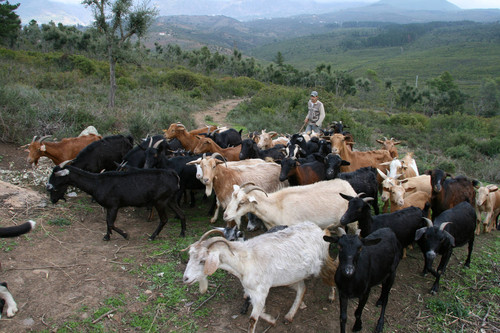Un proyecto del IGM pretende mejorar los sistemas de producción del ganado caprino
|
El Instituto de Ganadería de Montaña (IGM, centro mixto del CSIC y la Universidad de León) está poniendo en marcha el proyecto MEDGOAT, titulado ‘Caracterización de los sistemas de producción caprinos y estrategias para mejorarlos en el escenario de cambio climático de la región del Mediterráneo’, en el que participan socios de diferentes instituciones de Francia, Portugal, Italia, Marruecos y Túnez. El objetivo de esta iniciativa, que forma parte del programa europeo PRIMA (Partnership for Research and Innovation in the Mediterranean Area), es mejorar los sistemas de producción del ganado caprino en la zona del Mediterráneo. |























